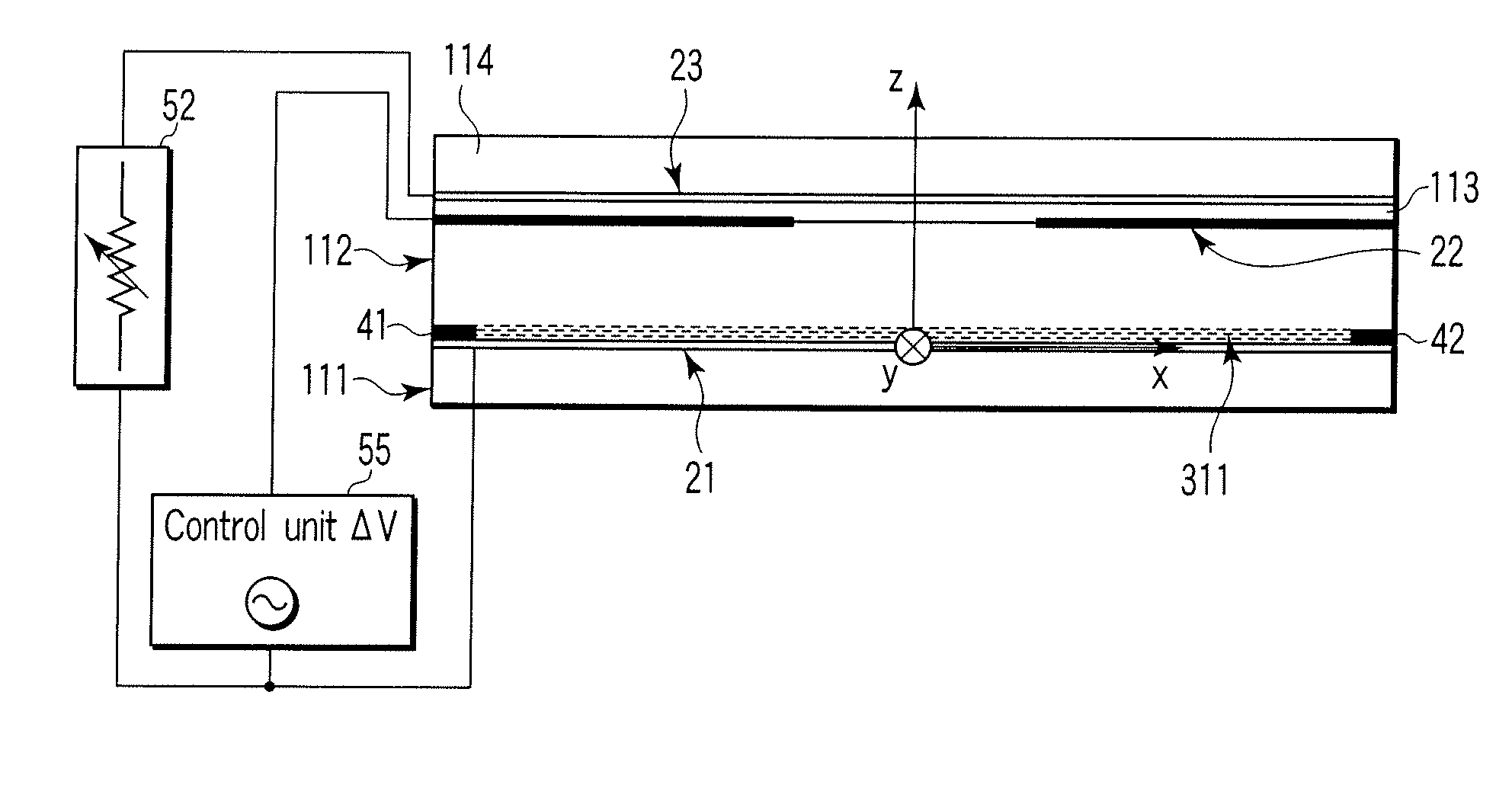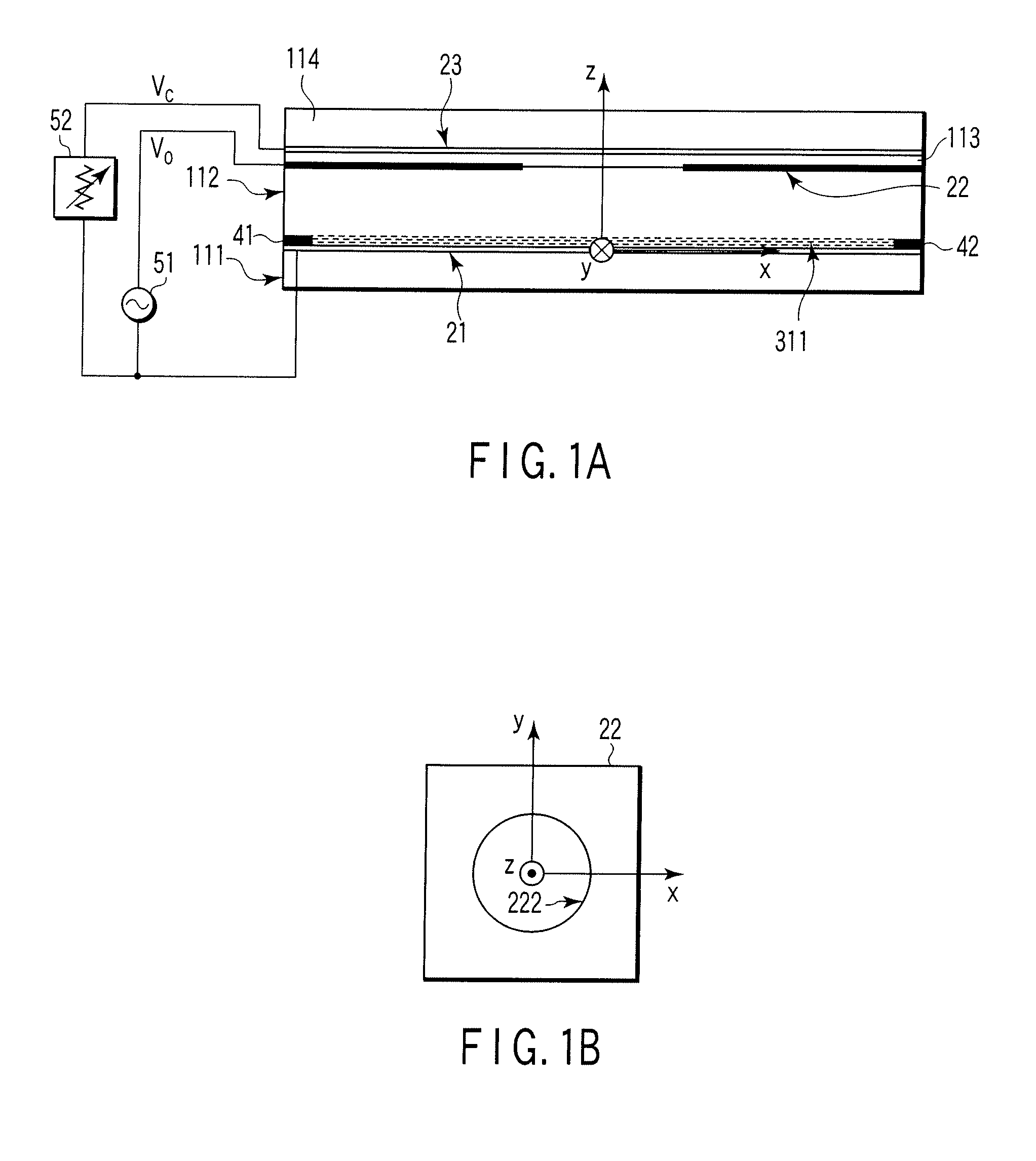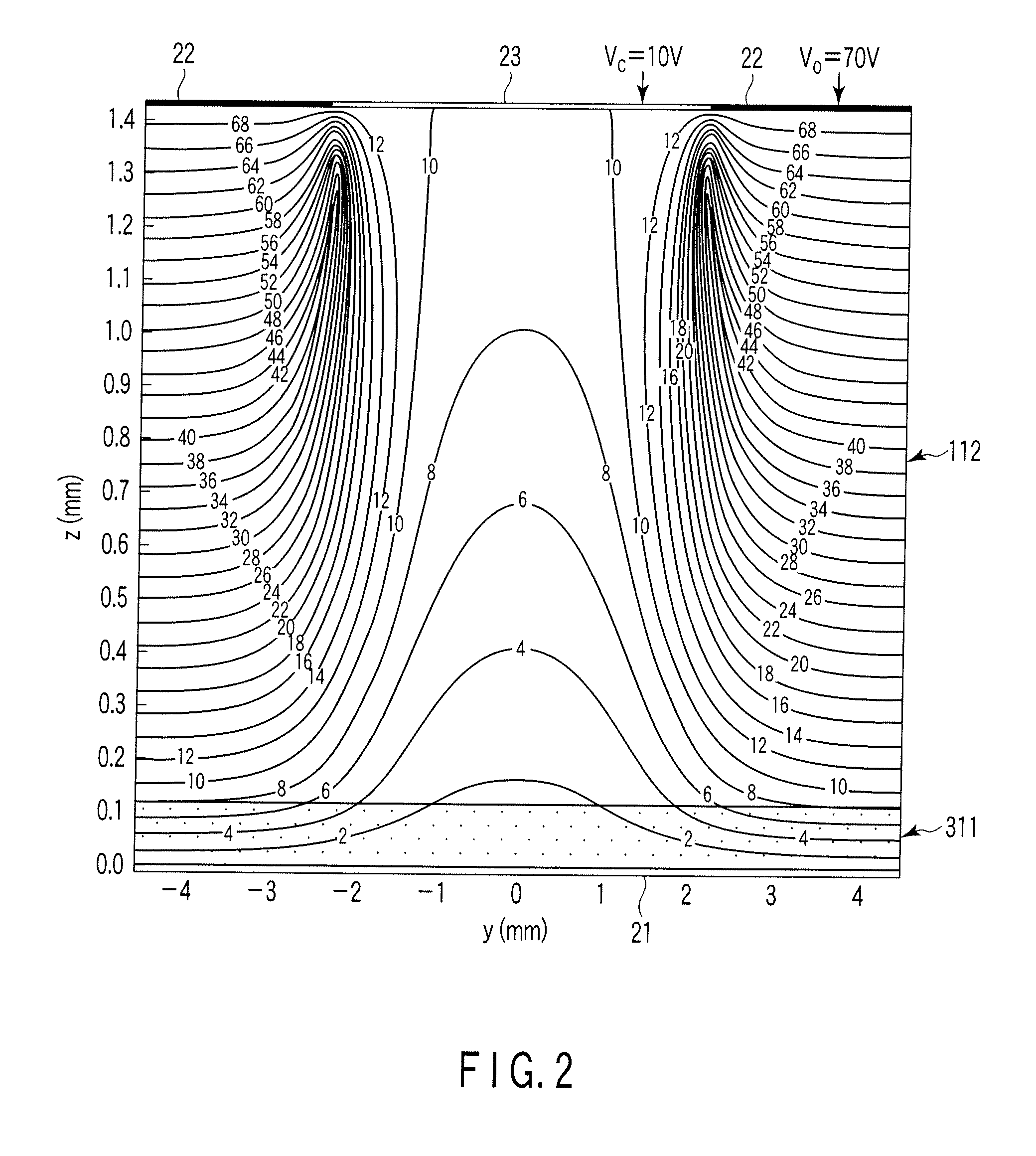Optical element
a technology of optical elements and elements, applied in the field of optical elements, can solve the problems of hardly acquiring good properties over a wide range of voltage applied, and achieve the effect of good optical properties, easy change, and great
- Summary
- Abstract
- Description
- Claims
- Application Information
AI Technical Summary
Benefits of technology
Problems solved by technology
Method used
Image
Examples
Embodiment Construction
[0059] Embodiments of the present invention will be described in detail, with reference to the accompanying drawings. FIGS. 1A and 1B, number 111 designates a first substrate (transparent glass plate). A first electrode 21 (made of ITO) is formed on the inner surface of the first substrate 111. On the side of the first electrode 21, a second substrate 112 (transparent glass plate) is arranged, facing the first electrode 21 and extending parallel thereto. Outside the second substrate112, a second electrode 22 (made of Al) is formed. As shown in FIG. 1B, the second electrode 22 has a circular hole 222 (having a diameter of, for example, 4.5 mm).
[0060] A liquid crystal layer 311 (having a thickness of, for example, 130 μm) is formed between the first electrode 21, which is formed on the first substrate 111, and the second substrate 112. Reference numbers 41 and 42 denote spacers that define the liquid crystal layer 311.
[0061] Further, an insulating layer 113 (e.g., glass layer as thi...
PUM
 Login to View More
Login to View More Abstract
Description
Claims
Application Information
 Login to View More
Login to View More - R&D
- Intellectual Property
- Life Sciences
- Materials
- Tech Scout
- Unparalleled Data Quality
- Higher Quality Content
- 60% Fewer Hallucinations
Browse by: Latest US Patents, China's latest patents, Technical Efficacy Thesaurus, Application Domain, Technology Topic, Popular Technical Reports.
© 2025 PatSnap. All rights reserved.Legal|Privacy policy|Modern Slavery Act Transparency Statement|Sitemap|About US| Contact US: help@patsnap.com



